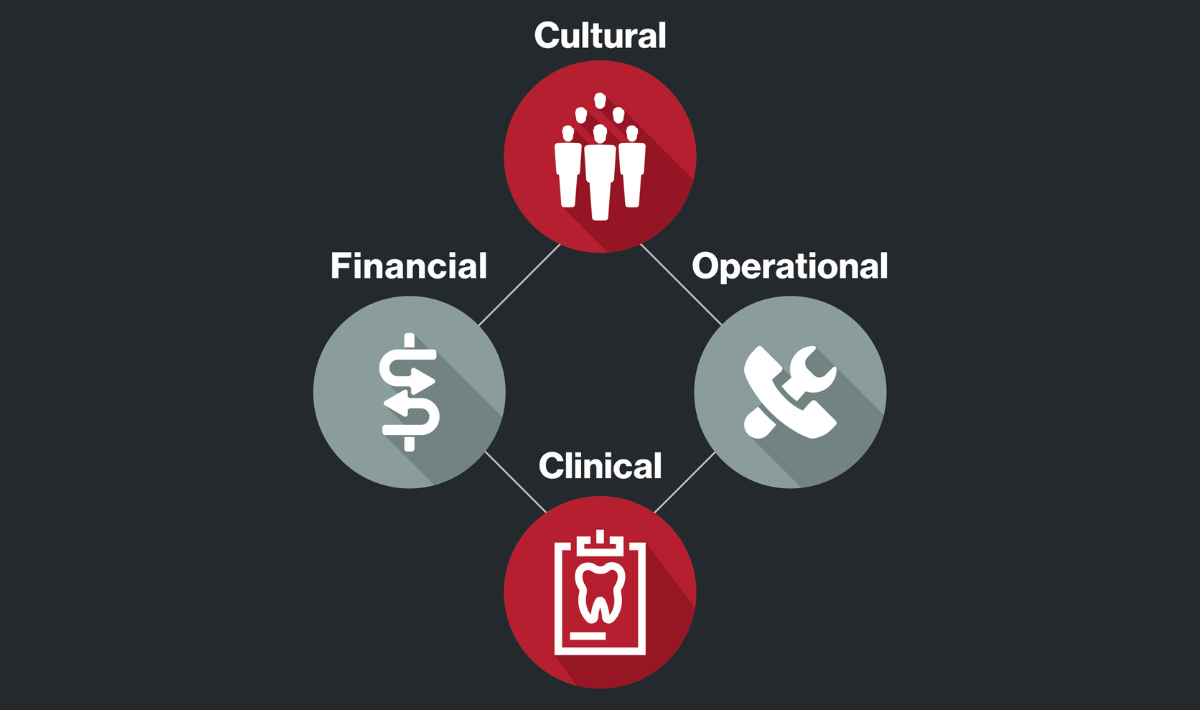Approach the integration of your new practice as a spectrum by focusing on four key areas.
By Josey Sewell, RDH, DEO
Congratulations! You’ve successfully closed the deal on your new dental practice. Kudos, it’s a significant milestone! The excitement of closing the deal should be complemented by a well-thought-out plan for integrating the new practice effectively into your existing practice(s). Successful integration is key to ensuring a smooth transition and the continued growth and success of your dental company.
View integration as a spectrum
When it comes to integrating a new dental practice into your existing business, view it as a spectrum of how much integration or standardization to pursue within the new practice. At one end there is “heavy standardization,” where the goal is to make the newly acquired practice align as closely as possible with your existing practice(s). This approach involves assimilating not just the clinical aspects but also the culture, operational systems, and financial structures. While this level of integration can be appealing, it’s crucial to consider the ripple effects of making significant changes.
The first and most important rule when acquiring a new practice is, “Don’t break it.” (That is, don’t make anything worse!) Rather than rushing to impose radical changes, it’s wise to focus on maintaining the practice’s existing success and modifying it as needed, gradually. This is the core principle of integration, ensuring that you don’t disrupt the well-established operations and relationships within the acquired practice.
On the other end of the spectrum lies the “light touch” approach. Here, you selectively integrate certain aspects of the new practice while preserving its identity and operations. This might involve taking over specific functions like payroll or accounts receivable while allowing the acquired practice to maintain its distinct character.
Four points of integration
Focus on these four key areas to integrate your new practice:
1. Cultural Integration: The cultural aspect is often overlooked but is arguably the most important. It involves aligning the acquired practice with your organization’s core values, vision, and cultural traditions such as birthday celebrations. Further, it includes being consistent with how you conduct performance reviews, hold meetings, and interact with team members across both practices.
2. Financial Integration: This includes essential tasks such as transitioning accounting systems and bank accounts. A successful financial integration ensures that the new practice’s monetary processes align with your organization’s financial structures.
3. Operational Integration: Operational compatibility involves ensuring that all practices use similar software, handle phone calls in a consistent manner, offer the same patient financing options, and utilize insurance in a similar fashion. Alignment here will streamline the patient experience and make the integration process smoother.
4. Clinical Integration: This entails ensuring that the standard of care, formulary, supply usage, among other clinical aspects, are consistent. Clinical integration aims to provide a consistent quality of care to patients and ensures that all providers in your organization follow the same standards.
Creating an integration plan
For successful integration, approach the process one step at a time. Start by evaluating their critical systems and reviewing their metrics to see where their strengths are. Identify what is already working well, what should be retained, and where they can improve/what should be modified. With this approach, you can ensure that you’re not unnecessarily disrupting efficient processes.
Also, prioritizing cultural integration is essential. If you really spend time on integrating culture, the team at your newly acquired practice is going to be more satisfied. You’ll gain their trust and “buy-in.” By focusing on cultural alignment as a primary goal, you can foster a sense of unity among team members and across your entire company. When integrating team members at the acquired practice see that their values and contributions are respected and valued, they will feel more comfortable and less resistant to change. By focusing on culture first, you ensure higher staff retention also.
Tips for successful integration
In addition to the four points of integration and the spectrum approach, here are some practical tips.
- Realistic Expectations: As you execute your integration plan, keep in mind the amount of change you’re asking a practice to do. Too much change too quickly can lead to resistance and disrupt morale, or even patient care.
- Resource Allocation: Understand that integrating a new practice requires significant resources, including time and energy. Consider having a dedicated integration team or project manager to ensure a smooth process.
- Communication: Open and transparent communication is essential. Ensure that the team at the acquired practice is heard, seen, and valued. Their input and feedback can be invaluable in the integration process.
By approaching the integration of your newly acquired practice with a clear plan, a people-first mindset, and prioritizing cultural integration, you’ll achieve a smooth transition and set the stage for your newly acquired practice’s long-term success.





